Are you seeking inspiration for your product design portfolio? Here are 10 great examples to show you how it can be done.
Every product designer needs a solid portfolio. Whether you’re a newbie, a senior, or an award-winning design leader; your product design portfolio showcases your best work, demonstrates your skills, and forms the basis of your personal brand.
And, while every product design portfolio is unique, there are certain best practices that are non-negotiable—ensuring that your portfolio is user-friendly, and using each project case study to demonstrate your process.
To help you in your quest, we’ve rounded up 10 of the best product design portfolios from around the web (and what you can learn from them). A good option for getting guidance in creating and developing your portfolio is to take a product design program or course. We offer a top-rated one here at CareerFoundry.
Table of contents
- The 10 best product design portfolios out there
- Product design portfolio best practices
- Key takeaways
- Product design portfolio FAQ
Ready to be inspired? Let’s go!
The 10 best product design portfolios out there
1. Florian Bölter: the power of single-page design
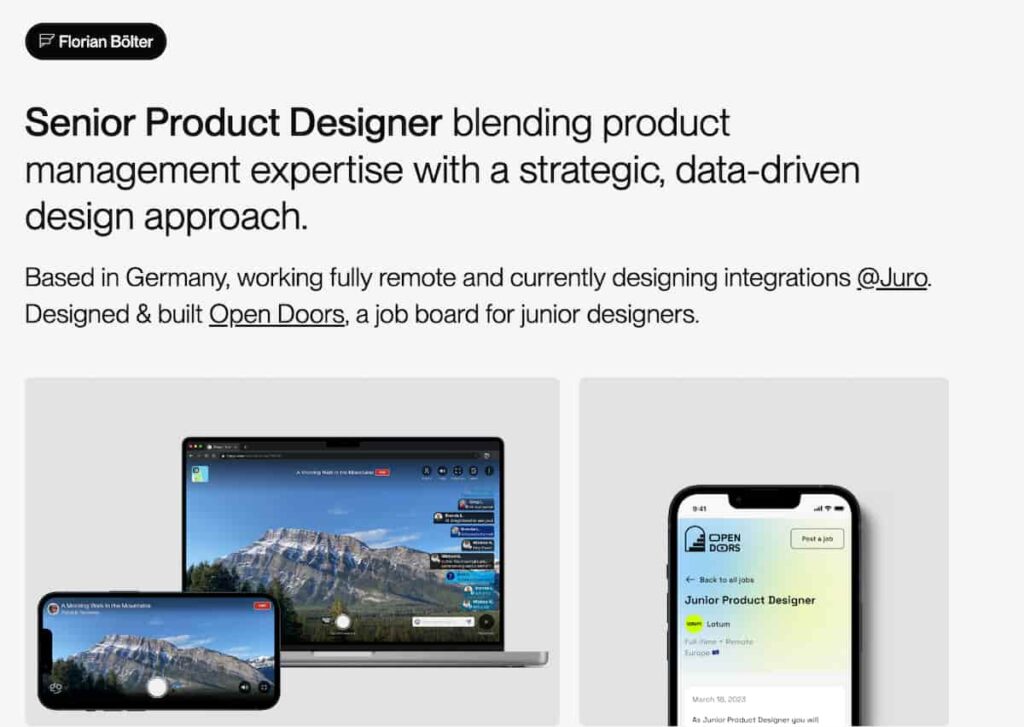
Florian Bölter is a product designer on a mission to craft human-centered consumer-facing products.
Florian studied literature at university and began his career in publishing. But, after completing the CareerFoundry UI design program, he switched to product design (you can read Florian’s full career-change story here). Nowadays, he’s working as a senior product designer for an AI platform.
Why we love Florian Bölter’s product design portfolio
Florian’s product design portfolio is a single-page masterpiece. It’s clean, it’s simple, and it’s incredibly straightforward to navigate—like any good digital product should be.
He leads with a clear headline, stating who he is and what he does, followed by clickable project case studies—each of which is logically structured, walking you through his process from start to finish.
The takeaway
Less is often more. A simple, one-page portfolio can be just as impactful as an elaborate, fancy design. Prioritize the most important content, keep your portfolio clean and clutter-free, and make sure it’s easy to navigate.
View Florian’s product design portfolio
2. Roxy Zhang: the importance of storytelling
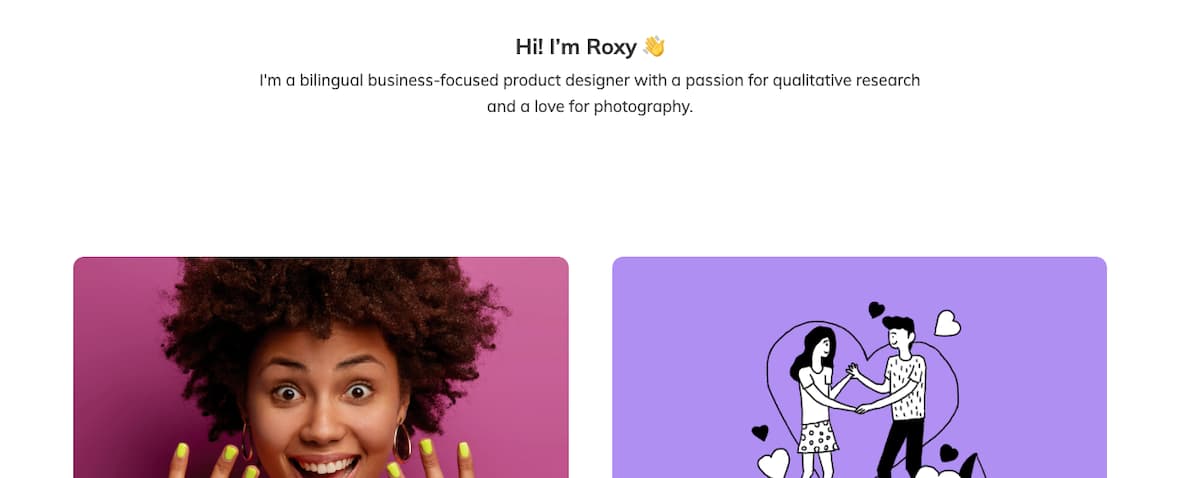
Roxy Zhang is a business-focused product designer with a passion for qualitative research and photography. She strives to create solutions that make a positive impact on society, and you’ll see that reflected in her portfolio case studies.
What we love about Roxy Zhang’s product design portfolio
Roxy’s product design portfolio provides a masterclass in storytelling. She starts each project case study with “The Story”, framing it as an adventure that she invites you to join her on. In her Lovepath case study, for example, Roxy sets the scene by asking “Is love only preserved for those with deep pockets?” then says “Join me on a journey to challenge conventional thinking, inspire change, and revolutionize the way we think about love and money!”
She then sets out the problems, the solutions she came up with, and how she got there—with delightful illustrations presented in comic strip-style along the way. You can even watch an animated video of how the Lovepath app came to be!
The takeaway
Storytelling is an extremely powerful tool when building your product design portfolio. With each case study, you want to tell a logical story from start to finish. Hook the reader and set the scene with a strong introduction, then take them through each step in your process—with visual artifacts along the way.
View Roxy Zhang’s product design portfolio
3. Miti Kotak: thoughtful learnings and reflections
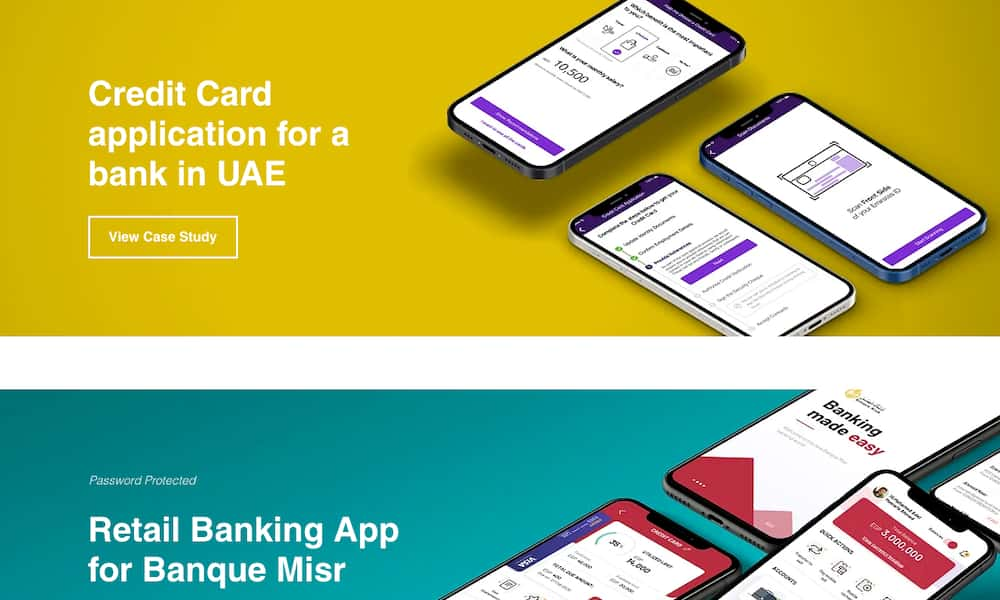
Miti Kotak is a product designer based in Berlin, Germany, who loves untangling complex problems with ‘practical and testable solutions that are desirable, feasible, and viable for both the business and its users.’
Why we love Miti Kotak’s product design portfolio
Miti’s portfolio does a great job of showcasing how they approach design challenges. Each case study tells a cohesive story, detailing the project brief, Miti’s role on the project, the discovery phase, and solutions found. We especially love the “What I have learned” section at the end of each case study, detailing Miti’s reflections and observations.
The takeaway
Conclude your portfolio case studies with key learnings, takeaways, or reflections. You can also include a summary of what went well and what you would do differently next time. This shows employers that you’re reflective and always looking to learn and improve. It’s also a great opportunity to demonstrate your problem-solving skills.
View Miti’s product design portfolio
4. Alexander Davis-Grimes: owning your career-change story
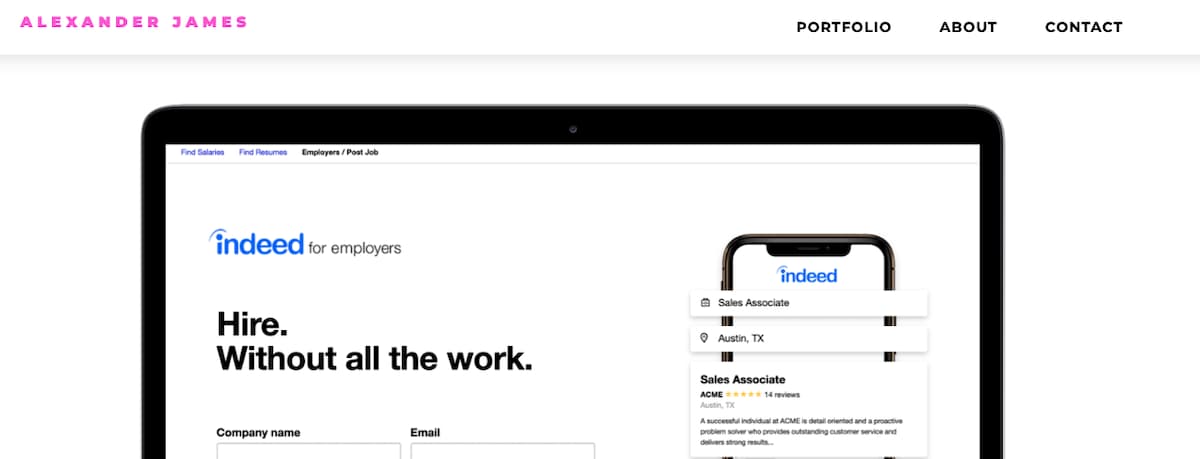
Alexander Davis-Grimes describes himself as a UX/UI designer and aspiring design technologist who wants to stay ahead of the curve, learn something new every day, and create smart, memorable, and intuitive designs with just a splash of ‘extraness!’
Like many product designers, Alexander started out in an unrelated field. Now, after studying with CareerFoundry to master UX and UI design, he’s working as a product designer at LinkedIn.
Why we love Alexander Davis-Grimes’ product design portfolio
Alexander is a career-changer, and he’s not trying to hide that in his portfolio. Quite the opposite, in fact. In his ‘About me’ section, he shares an open and honest account of his experience breaking into the field as a newcomer.
He writes:
“I’ve always taken a creative approach to problem-solving, so one day I figured, why not do the same for my career? My journey transitioning into design has not been an easy feat, but every second has been more invigorating than the next, and I wouldn’t trade this experience for the world!”
In doing so, Alexander markets himself as a committed learner and a passionate problem-solver—important qualities for a product designer.
The takeaway
If you’re a newcomer to the field, don’t be afraid to own that in your product design portfolio. Share your career-change story in your ‘About me’ section. Explain why you decided to switch to product design and emphasize the qualities that make you a great fit for this path—such as curiosity, a desire to learn, or a natural gift for empathy.
View Alexander Davis-Grimes’ product design portfolio
5. Cristie Huang: You can turn anything into a compelling case study
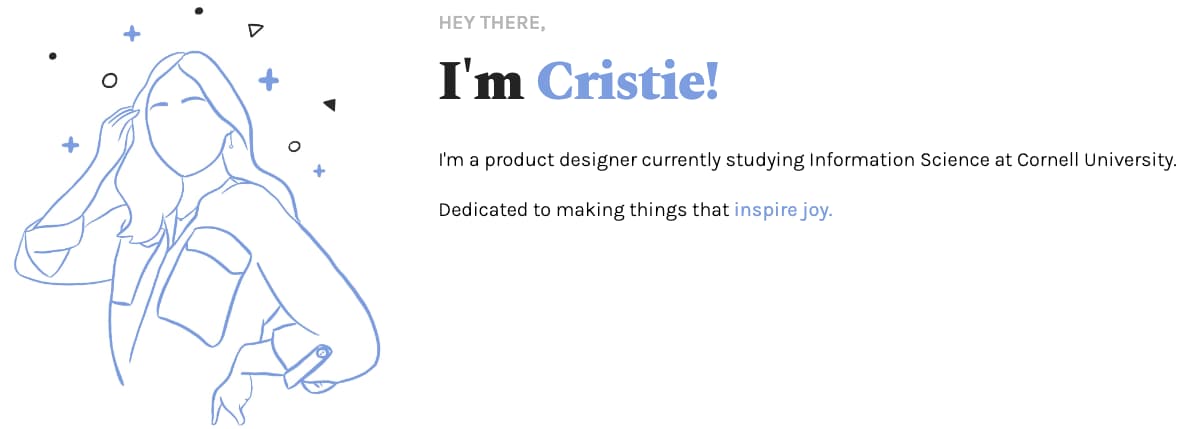
Cristie Huang is a San Francisco-based product designer with a Bachelor’s degree in Information Science. She’s got some impressive product design internships to her name, and she’s the co-founder and Head of Design for a startup called Cumulus—an edtech platform that seeks to empower underrepresented groups in high school to explore opportunities in tech.
Why we love Cristie Huang’s product design portfolio
Besides the super-clean design and cool homepage illustration, what we really love about Cristie’s product design portfolio is the case studies.
Cristie’s case studies aren’t all based on run-of-the-mill projects. She’s got a case study for a hackathon she took part in (which led to the idea for Cumulus, her edtech platform startup) and one for her product design internship at a company called Grabbd.
These do an excellent job of showcasing her product design skills—and show the importance of being creative with your portfolio, especially if you don’t have a ton of product design experience just yet.
The takeaway
Cristie teaches an important lesson about building an effective portfolio: you can turn pretty much anything into a compelling case study. Even if you haven’t got many (or any) real-world projects for your portfolio, you can still showcase your design skills.
Think about scenarios where you’ve applied problem-solving or implemented a particular step in the product design process (like research or ideation). Turn that into a case study and show hiring managers what you’re capable of.
View Cristie Huang’s product design portfolio
6. Rachael Grocott: Beautiful UI design makes a lasting impression
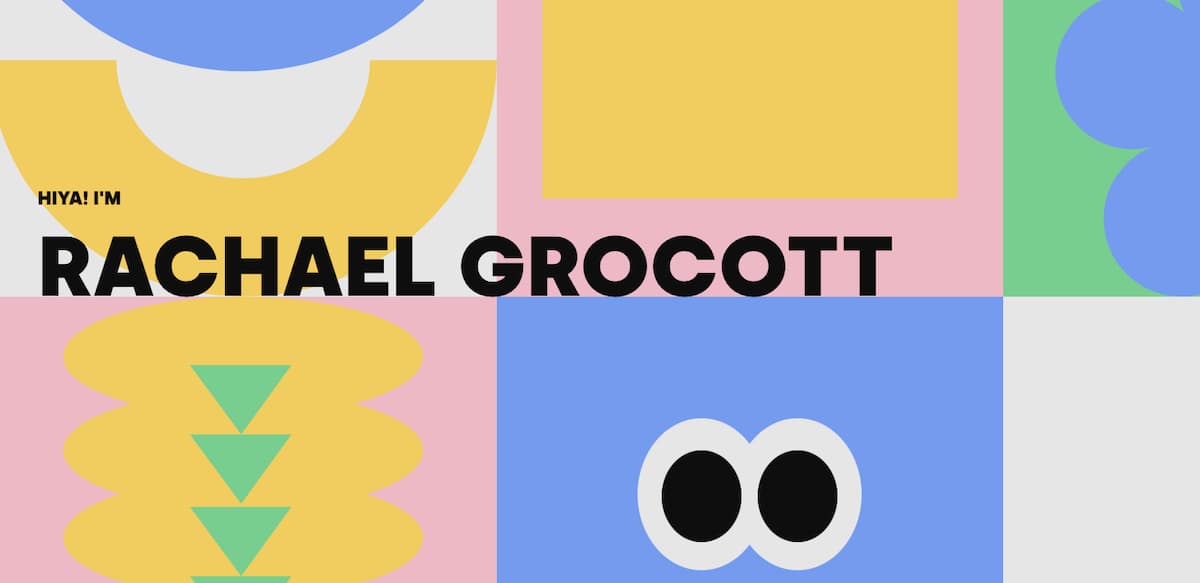
Rachael Grocott is a seasoned product designer with over eight years’ experience in the industry. Besides designing awesome digital products, Rachael runs Triangirls, a community for women and non-binary people in tech.
Rachael is also a talented illustrator, an established public speaker, and an accomplished coach and mentor. She’s an all-round design pro, and she’s got the portfolio to prove it.
Why we love Rachael Grocott’s product design portfolio
Rachael’s product design portfolio is one of the most visually compelling portfolios we’ve come across. It’s colorful and playful, bold yet harmonious, and entirely unique. Just look at that googly eyes animation on the home page! The overall aesthetic is incredibly powerful, and it speaks volumes about Rachael’s talent as a product designer.
The takeaway
Looks aren’t everything, but beautiful UI design will help your portfolio stand out. If you’re a product designer in the digital space, use your portfolio website as an opportunity to showcase your visual design skills. Whether it’s a quirky animation, custom typography, or a bold color scheme—don’t be afraid to make an impression.
View Rachael Grocott’s product design portfolio
7. Mide Ajayi: The art of carving out a strong niche
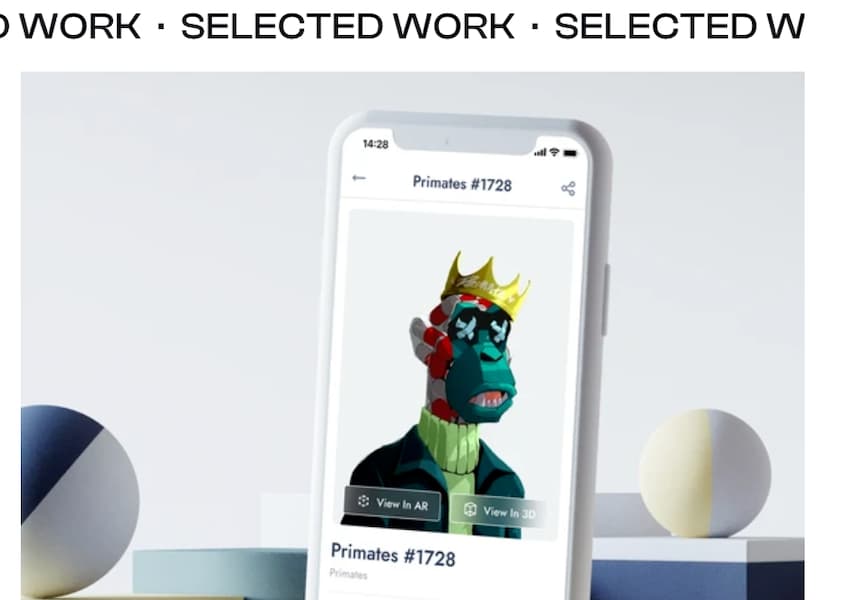
Mide Ajayi is an XR and digital product designer with additional expertise in 3D design.
XR stands for Extended Reality—an umbrella term for the different types of technology that alter our perception or experience of the physical world. Augmented Reality (AR), Virtual Reality (VR), and Mixed Reality (MR) all come under XR.
All that to say: Mide Ajayi is a product designer who’s right at the cutting edge!
What we love about Mide Ajayi’s product design portfolio
Through his product design portfolio, Mide has carved out a clear niche for himself. Although his skill set is broad—spanning UX and UI design, product design, 3D modeling, and even cloth simulation—his portfolio focuses on his work in the fintech space.
As you browse through his case studies, including an immersive AR app for NFT owners and various mobile products within the blockchain industry, you immediately get the sense that Mide is your go-to product designer for anything fintech-related. That’s powerful personal branding!
The takeaway
Use your product design portfolio to build your personal brand and market yourself according to your specialist expertise or areas of interest. If you see yourself as a healthcare product designer, for example, focus your portfolio on healthcare-related case studies. This is how you’ll attract relevant opportunities and carve out a strong niche.
View Mide Ajayi’s product design portfolio
8. Laura Block: Communicating the value of your work
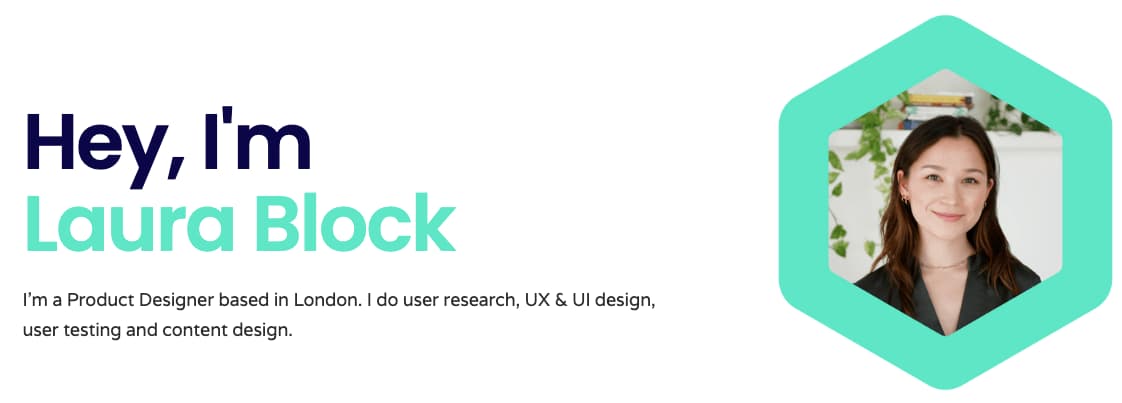
Laura Block is a freelance product designer based in London. Her work spans user research, UX and UI design, user testing, and content design, applied to projects across fintech, edtech, hospitality, and digital transformation.
What we love about Laura Block’s product design portfolio
Laura’s product design portfolio is beautifully simplistic and clean with tons of white space—but that’s not why it’s on our list. What really stands out on Laura’s portfolio is how she clearly communicates the value of her work.
Each case study includes a section titled “How did I have an impact?” where Laura summarizes the value she delivered to the end user and the business. In her Kitt Offices case study, for example, she explains how the platform redesign resulted in a 400% increase in location updates and a 50% increase in external broker enquiries. Impressive!
The takeaway
Don’t just showcase what you did and how you did it; explain why it mattered and the impact it had. Where possible, translate your design work into measurable value—such as a percentage increase in conversions or a reduced bounce rate. If you don’t have numbers to hand, talk about the qualitative value of your work or provide anecdotal evidence from users and stakeholders.
View Laura Block’s product design portfolio
9. Zoë Sinner: Testimonials for the win!

Zoë Sinner is a senior product designer with a focus on interaction design, product strategy, and visual design. At the time of writing, she’s a Lead Product Designer at Hinge Health, a digital clinic for joint and muscle care. Previously, she worked at Meta.
What we love about Zoë Sinner’s product design portfolio
Many of Zoë’s portfolio case studies are password protected, so not just anyone can view her work. This is usually the case if you’ve signed an NDA with a client, or if the project involves sensitive information that the company doesn’t want public.
We still get a feel for what a capable product designer she is, though, thanks to some brilliant testimonials on the homepage. Scroll down to the “Kind words” section and you’ll read how Zoë is a ‘force multiplier’ who makes ‘whole teams better’, ‘a catalyst of creativity’, and the go-to person for wrangling solutions and getting multiple stakeholders aligned.
These testimonials are especially powerful because they emphasize the value that Zoë brings not only as a designer, but as a collaborator—and that can be hard to demonstrate through case studies alone.
The takeaway
If possible, enhance your product design portfolio with testimonials. These can be from clients, colleagues, managers, or fellow students if you’ve completed a product design course—anyone who’s worked with you and can speak to your strengths as a product designer.
When gathering testimonials, encourage your testimonial-givers to focus not only on what you do, but how you do it. What are you like to work with? What unique value do you bring to the team? What’s special about your approach to problem-solving and product design? This will give future clients and employers great insight into what it’s like to have you on their team—and makes a compelling case as to why they should work with you.
View Zoë Sinner’s product design portfolio
10. Karim Rashid: Showcasing the breadth and diversity of your skillset

Karim Rashid is an industrial designer renowned for designing luxury goods, furniture, lighting, and product packaging. He’s won over 300 awards for his work—so you can imagine how impressive his product design portfolio is.
What we love about Karim Rashid’s product design portfolio
Karim’s portfolio makes a bold statement. With custom typography, a bright color palette, and impressive visuals galore, it’s a design masterpiece in itself.
But, beneath the fancy aesthetic, what really stands out is the sheer diversity of his work. Karim’s product design portfolio spans interiors, furniture, lighting, packaging, and consumer goods. In the ‘product’ category alone, you’ll find everything from towels, mugs, and pressure cookers to luggage, hairdryers, and refrigerators—all designed by Karim.
Karim’s portfolio reminds us that product design is an incredibly diverse field. It’s not just limited to websites and apps; it encompasses any and all products that can be used, experienced, or interacted with in some way.
The takeaway
You may not have 300 design awards like Karim, but there’s still plenty of inspiration you can take from his portfolio. If, like Karim, you’re showcasing many different types of work or multiple aspects of your skill set, be sure to divide them up into clearly labeled categories. This makes it easier for employers to navigate your portfolio and zoom in on the areas they’re most interested in.
View Karim Rashid’s product design portfolio
Product design portfolio best practices
We’ve just explored some of the best product design portfolios out there. And, while they’re all unique, they’ve got lots in common, too. That’s because they’ve been created with certain best practices in mind.
So what do all the best product design portfolios teach us? What best practices should you follow when creating your own portfolio? Let’s round them up.
1. Ensure that your product design portfolio is usable and user-friendly
Like any other product you create, your product design portfolio must be usable and user-friendly. Anyone who lands on your website should be able to easily find what they’re looking for and navigate from one case study to the next. Ultimately, you want to provide a positive user experience—otherwise, you’re not sending a great message about your skills as a product designer.
2. Make an impression with strong visual design
You’re a product designer (or aspiring to be one), so you know that UX and UI design go hand-in-hand. Once you’ve got the layout and structure in place, polish up your portfolio with some first-class visual design.
All of the product design portfolios on our list have their own unique aesthetic—from Florian Bölter’s single-page simplicity to Karim Rashid’s bold and bright design. As you design the layout, colors, typography, and imagery for your portfolio, think about the impression you want to make and the personal brand you’re trying to build.
3. Curate your best work
Your product design portfolio is like a highlights reel of your very best work, so think carefully about the projects you’ll include. If you’re trying to carve out a particular niche, include projects that are relevant in that space. If you want to position yourself as a versatile product designer, showcase a variety of projects you’ve worked on. Your product design portfolio is a marketing tool, so curate it with your goals and your target audience in mind.
4. Showcase your process and tell a logical story
Your product design portfolio is made up of project cases studies that demonstrate how you work. What’s the first step you take when presented with a design challenge? How do you arrive at effective solutions? What do you do if things don’t go to plan?
Write each case study like a story with a clear beginning, middle, and end. Share the different techniques you used at each stage of the process, and include visuals to support the narrative—such as personas, wireframes, or even photos of you in action!
And remember: the process is just as important as the final solution. Don’t just present the end result; show us how you got there.
5. Talk about the impact of your work
Product design is all about solving end-user problems and driving business value. When you write up your portfolio case studies, it’s important to circle back to this and talk about the impact of your work. Where possible, speak in quantifiable terms and tie your work to key business objectives (such as increasing subscriber numbers or reducing bounce rates). If not, talk about the qualitative value of your work based on what you’ve heard from users, customers, or internal stakeholders.
Key takeaways
Your product design portfolio is an extension of your personal brand. It should clearly communicate who you are, what you do, and the skills, expertise, and value you can offer to prospective employers or clients.
It should be usable and user-friendly, visually appealing, and feature the projects you’re most proud of. For each project, be sure to tell a logical story that demonstrates your process—and translate what you did into measurable value.
With a professional portfolio to hand, you’ll be ready to impress hiring managers, win freelance clients, and establish yourself as an accomplished product designer.
Want to learn more about making it big in the world of product design? Check out these guides:
- How To Become a Product Designer (Step-by-Step)
- The Top Product Designer Skills You’ll Need To Get Hired
- The Best Product Design Bootcamps for Budding Designers
Product design portfolio FAQ
What is a product design portfolio?
A product design portfolio is a dedicated website featuring a curation of projects you’ve worked on. It demonstrates your product design skills in action, showing employers and clients how you work, the process you follow, and what you’re capable of as a product designer. Your product design portfolio is an essential pillar of your personal and professional brand.
What should a product design portfolio include?
A product design portfolio should include an ‘About’ page or section, contact details, and case studies. Each case study showcases a project you’ve worked on, outlining your role on the project, the problem you set out to solve, the process you followed, and the solution(s) you created. A product design portfolio can also include testimonials.
How many projects should be in a product design portfolio?
When building your product design portfolio, aim to include at least 3 projects. This allows you to demonstrate the breadth of your skills and show employers how you tackle different challenges. As you gain more experience, you’ll have more projects to include in your portfolio. If you’re featuring more than 8 projects, consider dividing them into clearly-labeled categories.
